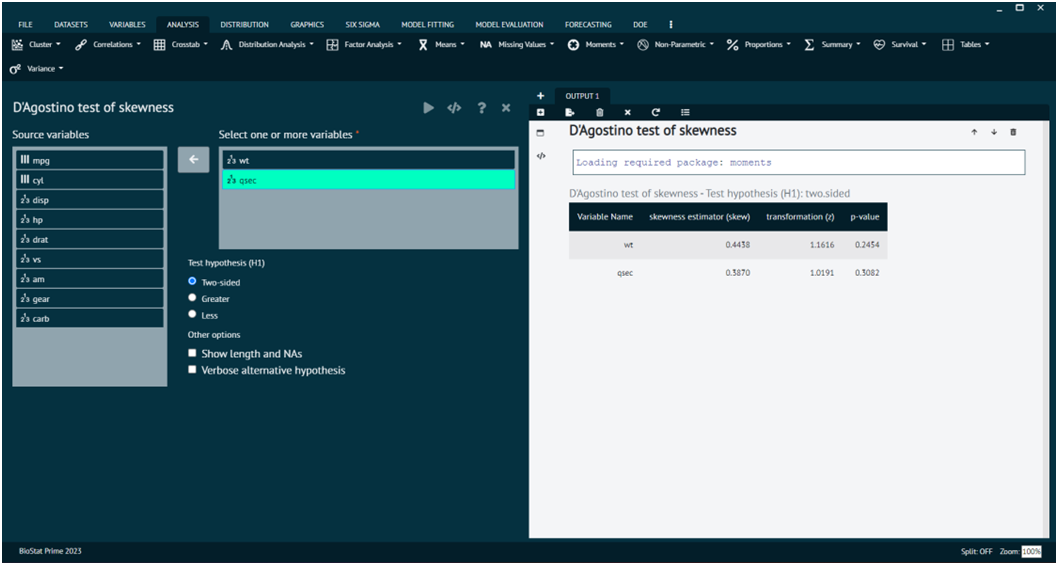Moments
D’Agostino skewness test
The D'Agostino skewness test is a statistical test used to assess whether the skewness of a sample differs from what would be expected in a normal distribution. Skewness measures the asymmetry of a distribution, indicating whether the data is skewed to the left or right. The D'Agostino skewness test is one of the omnibus tests for normality, alongside tests like the Shapiro-Wilk test and the Anderson-Darling test. These tests are designed to check whether a given sample comes from a normally distributed population.
Performs D'Agostino test for skewness in normally distributed data.
To analyse it in BioStat Prime user must follow the steps as given.
- Steps
Load the dataset -> Click on the analysis tab in main menu -> Select Moments -> The moments tab leads to D’Agostino skewness test in the dialog -> In the dialog select the variable and options according to the requirement -> Execute the dialog.

- x
a numeric vector of data values.
- y
a character string specifying the alternative hypothesis, must be one of '"two.sided"' (default), '"greater"' or '"less"'. User can specify just the initial letter.